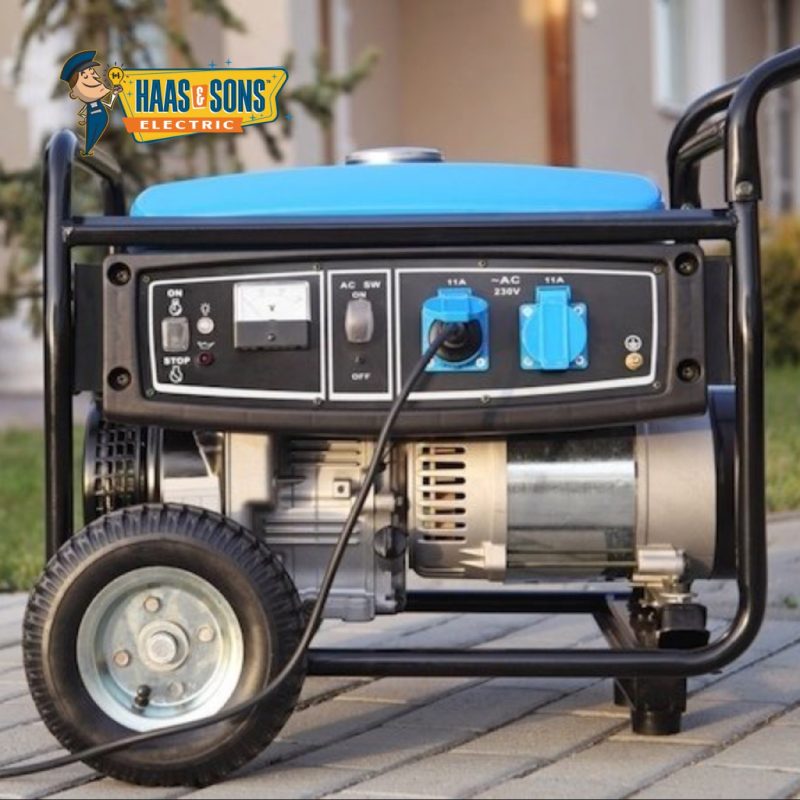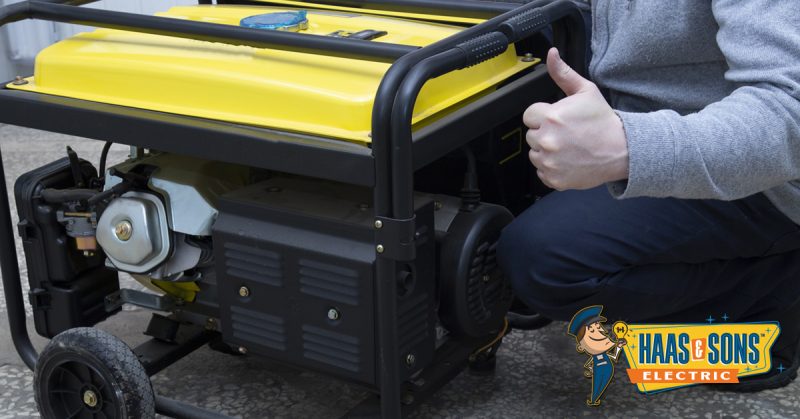Owning a home in Maryland means being prepared for the unexpected, especially power outages caused by yearly storms. Investing in a portable generator can be a wise decision to ensure your home remains powered during these events. Let's explore why a portable generator might be the right choice for you and the installation options available in Maryland.
On This page: Portable vs Standby, Cost of Generators in MD, Advantages of Portable Generators in MD, Generator Installation, Manual Transfer Switch or Interlock Kit, What Size Generator?, Safety Tips, Generator Usage Guide, Recommended Portable Generator Models
Portable Generators vs. Standby Generators
When considering generator options, you can choose between portable generators and standby generators. Both serve the same basic function, but they differ significantly in terms of cost and convenience. If you’ve ever dealt with the lights going out or had the power out in part of the house due to a storm or electrical issue, you know how important it is to have a reliable backup option.
At Haas & Sons - we do not install or service standby generators, but we can help you choose and install a portable generator as well as the manual transfer switch or interlock kit that will allow you to power your necessary appliances during a power outage.
Standby vs. Portable Generator Cost and Installation In Maryland
- Portable Generators: More affordable to purchase and install, costing between $500 to $1,500 for the unit and an additional $1,500 to $3,000 for portable generator transfer switch installation by one of our expert Maryland electricians.
- Standby Generators: More expensive, with the unit itself ranging from $1,900 to $12,000. Professional installation and a fuel source can bring the total cost to $5,000 to over $20,000.
Advantages of Portable Generators in MD
 Affordability: Portable generators are the most popular choice due to their lower cost.
Affordability: Portable generators are the most popular choice due to their lower cost.- Flexibility: They can power almost as much as a standby generator when connected to a home's circuit breaker panel via a transfer switch.
- Fuel Options: Most run on gasoline, but dual fuel models that use gas or propane are recommended.
Installation of Portable Generators in Maryland
For homeowners in Maryland, portable generator installation costs and processes are a crucial consideration. Portable generator installation in Maryland involves ensuring the generator is properly connected to your home’s electrical system, typically through a manual transfer switch or an interlock kit.
Why You Should Have a Manual Transfer Switch or Interlock Kit on Your Maryland Portable Home Generator
When using a portable generator to power your home, having a manual transfer switch or an interlock switch is essential for several important reasons:
Manual Transfer Switches and Interlock Kits
- Manual Transfer Switch: Allows you to switch from utility power to generator power. It's a separate electrical box that lets you choose which circuits to power.
- Interlock Kit: Fits on your existing main panel box and allows you to back up the entire home, providing flexibility to turn on and off circuits as needed.
Safety - Prevents Backfeeding:
- Manual Transfer Switch: Isolates the generator power from the utility power. This prevents backfeeding, which occurs when generator power flows back into the utility lines, posing a severe risk to utility workers and neighbors.
- Interlock Switch: Ensures that the main breaker is off before the generator breaker can be turned on, preventing accidental backfeeding.
Convenience - Simplifies Operation:
- Manual Transfer Switch: Allows you to switch from utility power to generator power with a simple flip of a switch, eliminating the need to run multiple extension cords throughout your home.
- Interlock Switch: Fits into your existing electrical panel and allows you to power circuits in your home selectively, offering flexibility in managing your power needs during an outage.
Versatility - Powers Multiple Circuits:
- Manual Transfer Switch: Lets you choose which circuits to power, enabling you to run essential appliances and systems like refrigerators, sump pumps, and lighting.
- Interlock Switch: Allows you to back up your entire home, letting you control which circuits to activate based on your generator's capacity.
Legality and Compliance - Meets Electrical Codes:
- Both manual transfer switches and interlock kits comply with local electrical codes and regulations, ensuring your home setup is safe and legal.
Efficiency - Optimizes Power Usage:
- Manual Transfer Switch: Helps distribute generator power more effectively across essential circuits without the hassle of managing multiple extension cords.
- Interlock Switch: Offers the ability to power your home's electrical panel selectively, enabling you to prioritize essential appliances and systems without overloading the generator.
Cost-Effectiveness - Reduces Installation Costs:
- Manual Transfer Switch: Although it involves an upfront cost for installation, it saves time and money by eliminating the need for numerous extension cords and ensuring a more reliable power supply. Installing a manual transfer switch setup ranges from $1,500 to $3,000.
- Interlock Kit: Often more affordable and simpler to install than a full transfer switch setup, making it a cost-effective solution for connecting a portable generator to your home. Installing an interlock kit costs between $1,000 to $1,500
Determining the Right Size Generator
Portable generators provide between 3kW and 10kW of power. The size you need depends on what appliances and systems you want to run during an outage. For instance, a 6kW generator can handle small circuits and one large appliance at a time, while a 10kW generator can power most of your home without concern for overloading.
Portable Generator Safety Tips
- Placement: Always run generators outdoors, at least 20 feet from the house, with the engine facing away from windows or doors.
- Ventilation: Never use a generator indoors or in enclosed spaces to avoid carbon monoxide poisoning.
- Weather Protection: Use a well-ventilated cover to protect the generator from rain.
- Refueling: Turn off the generator and let it cool before refueling to prevent fire hazards.
- Storage: Store gasoline properly, away from heat sources and your home.
- Transfer Switch: Use a transfer switch to safely connect the generator to your home’s electrical system.
- Additional Safety: While planning for outages, it's also a good idea to schedule regular smoke detector replacement so your home stays protected from fire hazards year-round.
Using a Portable Generator
- Setup: Place the generator outdoors on a flat, stable surface.
- Connection: Plug the generator cord into your power inlet box and turn off all breakers in the manual transfer switch.
- Startup: Ensure the gas tank is full and the gas cap is secure before starting the generator.
- Operation: Gradually turn on circuits or appliances, starting with the highest power requirements.
- Refueling: Turn off the generator and allow it to cool before adding fuel.
Recommended Portable Generator Models
Consider brands like Honda, Generac, Kohler, and Champion for reliable performance and readily available maintenance parts.
Portable generators are a cost-effective solution for maintaining power during outages in Maryland. They require regular maintenance, but offer significant benefits in ensuring your home remains powered and comfortable during storms. For professional advice and installation, contact Haas & Sons Electric today to learn more about portable generator installation near you and ensure your home is always prepared.
For any questions or to schedule a consultation for portable generator installation in Maryland, call Haas & Sons Electric at 443-396-2555. We are always ready to help!






